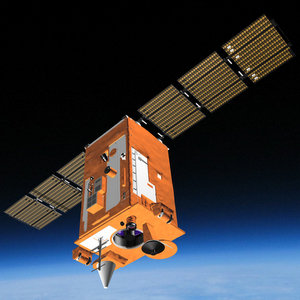Scientists of Samara University continue a series of scientific experiments on the spacecraft AIST-2D, launched in space a year ago - April 28, 2016 under the first launch campaign from the new Russian spaceport Vostochny.
The small spacecraft AIST-2D was created by specialists of the Progress Rocket Space Centre and scientists of Samara National Research University named after Academician S.P. Korolev.
In addition to the target equipment for remote sensing of the Earth, five sets of scientific equipment developed at the Institute of Space Instrument Engineering of Samara University have been installed on its board.
"As at April 2017, we can say that, in accordance with the agreed plan, regular works are continuously conducted with all scientific equipment, - said Konstantin Voronov, the director of the Institute of Space Instrument Engineering.Workers of the “Samara” Data Acquisition and Processing Center of Progress Rocket Space Centre are carrying out the entire cycle of preparation and bookmarking of programmes for switching on and switching off of equipment, data sets, control commands. All the equipment issues telemetric packets with the results in the established format".
The program of scientific experiments on "AIST-2D" is expected to continue for three years.
All studies are of an applicable nature.The information received by the scientists of Samara University during the flight of AIST-2D will allow to create more efficient and inexpensive spacecrafts in the future, as well as to increase their length of service in space.
For example, particle sensor DCH-01 is designed to investigate the influence of various factors of outer space on materials, optical elements and microcircuits.In particular, scientists experimentally test the principle possibility of using "earth" electroradioelements (ERE) of the Industrial category for the production of space vehicles.At present while creating satellites, much more sophisticated and expensive certified under the Space category EREs are used.
Already carried out experiments have shown that all investigated samples of microcircuits, including those certified in the Industrial category, are operational.Successful reprogramming of flash memory was performed 4 thousand times. Failures and distortion of information recorded in flash memory, are absent."It is expected that the researched ERE will normally operate during the entire life of the scientific equipment located on the spacecraft" AIST-2D ".Nevertheless, even now it can be concluded that in a number of cases (for example, when creating experimental university nano and microsatellites with a limited life span), microcircuits certified in the Industrial category can function as successfully as much more expensive ones products certified in the category of Space ", – Mikhail Kalayev, the senior researcher of the Institute of Space Instrument Engineering of Samara University, is convinced.
Futhermore onboard "AIST-2D" experiments are carried out using the following scientific equipment:
Mass spectrometric sensor is designed to analyze small spacecraft’s external atmosphere (gas environment) to study the influence of space environmental factors on the quality of scientific and technological experiments and satellite’s aerodynamics;
Compensator of microaccelerations is engaged in monitoring the motion of spacecraft and compensation of onboard rotational microaccelerations in the low-frequency part of the spectrum. On the basis of microaccelerations compensator it is possible to create a magnetic system for controlling the motion of a spacecraft, to solve problems of orientation and stabilization of a satellite in space.
Complex "Meteor-M" is used for the investigation of micrometeorites parameters and particles of space debris.
While operating in conditions of outer space the combined experimental equipment is meant to study the changes in parameters, to evaluate the stability of technical characteristics of experimental solar batteries (the elaboration of Samara University), experimental lithium batteries (the elaboration of the Center of Advanced Technologies and Equipment, Moscow) and fiber optic displacement sensors (the elaboration of Samara University).
For reference
Together with the strategic partner – Progress Rocket Space Centre, Samara University created an orbit group of small spacecrafts for scientific and educational purposes of the AIST series.
This group is a part of a distributed scientific and educational laboratory with ground and space segments.In addition to the small spacecraft of remote sensing of the Earth "AIST-2D", it also includes two small satellites "AIST" of the first generation. Instrumental complexes developed by the Institute of Space Instrument Engineering are also installed on them as target equipment.
"AISTs" of the first series are used to solve educational, scientific, technical and experimental problems, such as:
- measurement of the Earth's magnetic field and development of a system for measuring and compensating small spacecraft’s microaccelerations;
- investigation of microgravity problems on small space vehicles;
- investigation of the parameters of high-speed solid particles of natural and artificial origin;
- experimental space testing of promising types of solar cells from gallium arsenide.
 RU
RU  EN
EN  CN
CN  ES
ES 